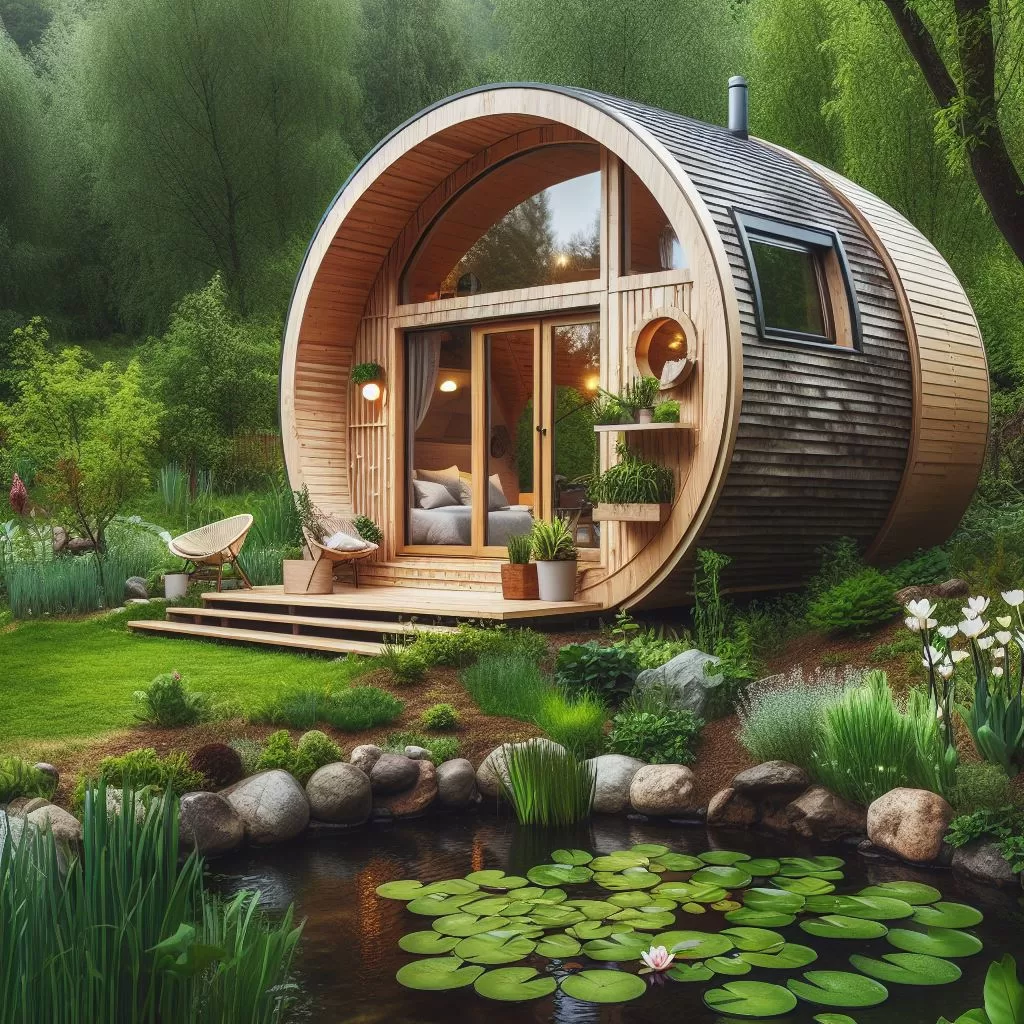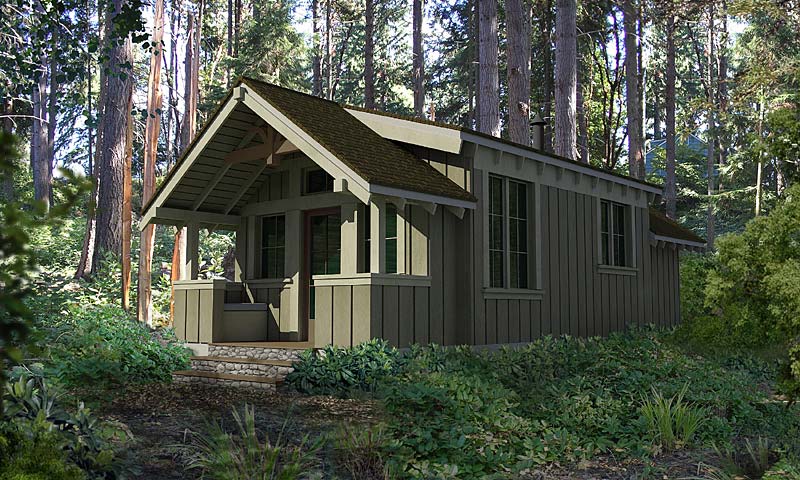In recent years, eco-friendly homes have transitioned from a niche market to a significant player in the real estate industry. This surge in popularity isn’t just due to a growing awareness of environmental issues, but also because of the tangible economic benefits these homes offer to homeowners. This article delves into the financial advantages of investing in eco-friendly homes, examining everything from potential energy savings to increased property value.
Understanding Eco-Friendly Homes
Eco-friendly homes represent a revolutionary approach in modern living, where environmental sustainability and efficiency are at the forefront of design and construction. These homes are characterized by their reduced ecological footprint, achieved through innovative use of materials, energy, and water resources. At the core of eco-friendly housing is the principle of ‘sustainable living’ – this means living in a way that meets our current needs without compromising the ability of future generations to meet their own needs.
The foundation of eco-friendly homes lies in their construction and design. They are often built with sustainable materials such as recycled, reclaimed, or natural products that have a lower impact on the environment. These materials not only reduce the home’s carbon footprint but also often offer better durability and health benefits compared to traditional building materials. For instance, non-toxic paints and adhesives, bamboo or cork flooring, and wool insulation are commonly used in place of their less sustainable counterparts.
Energy efficiency is another hallmark of eco-friendly homes. These houses typically incorporate features like high-efficiency windows and insulation, energy-efficient appliances, and LED lighting to minimize energy consumption. Many eco-friendly homes take a step further by integrating renewable energy sources such as solar panels or wind turbines, allowing homeowners to generate their own clean energy and, in some cases, even sell excess power back to the grid. The use of smart home technologies, like programmable thermostats and energy monitoring systems, also plays a significant role in optimizing energy usage and reducing waste.
Water conservation is equally important in eco-friendly homes. Features like low-flow faucets and showerheads, dual-flush toilets, and drought-resistant landscaping help in minimizing water usage. Rainwater harvesting systems and greywater recycling can also be incorporated to further enhance water efficiency by reusing water for non-potable purposes like irrigation and toilet flushing.
Eco-friendly homes are a testament to how sustainable practices can be seamlessly integrated into residential living. They are designed with the intention of minimizing environmental impact through efficient use of resources, while also providing a healthier and often more cost-effective living space for residents. As environmental awareness and technology continue to advance, eco-friendly homes stand at the forefront of a greener, more sustainable future in housing.
Upfront Costs vs. Long-Term Savings
The journey into eco-friendly living often begins with a consideration of the balance between initial investment and long-term financial benefits. While eco-friendly homes typically incur higher upfront costs compared to traditional homes, these are frequently offset by substantial savings over time. The initial expenses can be attributed to the integration of advanced technologies and sustainable materials. For instance, installing solar panels, high-efficiency HVAC systems, and energy-efficient windows comes at a premium. Additionally, the use of eco-conscious materials like reclaimed wood, bamboo flooring, or non-toxic insulating materials may also contribute to higher construction or renovation costs. These expenses, though substantial, are an investment in the future, both environmentally and economically.
However, the long-term economic advantages of eco-friendly homes are significant. One of the most tangible benefits is the drastic reduction in utility bills. Energy-efficient appliances, well-insulated walls, and renewable energy sources can dramatically lower energy consumption, translating to lower electricity and heating bills. Over time, these savings can add up to offset the initial higher costs of the home. Furthermore, many regions offer incentives for eco-friendly home improvements, such as tax rebates, grants, or lower interest loans, which can help mitigate upfront costs. In addition to utility savings, eco-friendly homes often require less maintenance due to the durability of sustainable materials used in their construction. This factor further contributes to the long-term financial benefits, making the initial investment more palatable in the context of future savings.
Energy Savings – A Closer Look
Energy efficiency stands as a cornerstone in the design and functionality of eco-friendly homes, contributing significantly to their appeal both environmentally and economically. The ethos of energy savings in these homes is twofold: reducing energy consumption and harnessing renewable energy sources. By integrating advanced energy-efficient technologies and design principles, eco-friendly homes are adept at minimizing energy waste, which translates into substantial savings for homeowners.
One key aspect of energy savings in eco-friendly homes is the use of state-of-the-art insulation and window installations. Advanced insulation materials, such as spray foam or recycled denim, provide superior thermal regulation, keeping homes warm in winter and cool in summer. This high level of insulation reduces the need for excessive heating and cooling, thereby lowering energy consumption. Similarly, energy-efficient windows, often double or triple-glazed, minimize heat transfer and reduce the reliance on artificial heating and cooling systems. These windows not only offer excellent thermal insulation but also enhance soundproofing and improve the overall comfort of the home.
Another significant contributor to energy savings is the implementation of energy-efficient appliances and lighting. Appliances with high energy ratings, such as refrigerators, washing machines, and dishwashers, consume less electricity and water, leading to lower utility bills. LED lighting, which is vastly more energy-efficient and longer-lasting than traditional incandescent bulbs, further reduces electricity consumption and costs.
The incorporation of renewable energy sources, like solar panels or small wind turbines, takes energy savings to the next level. Solar panels, in particular, have become increasingly popular and accessible. They allow homeowners to generate their own clean electricity, reducing reliance on the grid and providing significant savings on energy bills. In some cases, excess energy generated can be sold back to the grid, creating an additional income stream. These renewable energy technologies not only lower utility costs but also contribute to a reduction in greenhouse gas emissions, aligning with broader environmental sustainability goals.
The energy savings in eco-friendly homes are a product of thoughtful design, advanced materials, and innovative technologies. These homes not only lead to significant reductions in energy consumption but also foster a sustainable lifestyle. As energy costs continue to rise globally, the savings afforded by eco-friendly homes become increasingly important, both as a financial consideration and an environmental imperative.
Increased Property Value
One of the most compelling economic benefits of eco-friendly homes is their potential to increase in property value over time. As global awareness of environmental issues grows and green living becomes more mainstream, the demand for sustainable properties is on the rise. This heightened demand often translates into higher market values for eco-friendly homes, making them not just a responsible environmental choice, but also a wise financial investment.
The increased value of eco-friendly homes can be attributed to several key factors. Firstly, the energy-efficient features and sustainable design elements of these homes are highly attractive to modern buyers, who are increasingly conscious of both environmental impact and long-term cost savings. Features like solar panels, energy-efficient appliances, and superior insulation are seen as valuable additions that promise reduced utility bills and a smaller carbon footprint. Moreover, as energy prices continue to rise, the appeal of homes that offer lower energy costs naturally increases.
Secondly, eco-friendly homes often come with certifications like LEED (Leadership in Energy and Environmental Design), ENERGY STAR, or similar regional equivalents. These certifications are not just badges of environmental responsibility; they are also indicators of quality and performance. Homes that achieve these certifications have to meet strict guidelines in terms of energy efficiency and sustainable design, which can significantly boost their market value. Prospective buyers and real estate investors see these certifications as a mark of distinction, often willing to pay a premium for homes that carry them.
Furthermore, the durability and low maintenance features of eco-friendly homes add to their value. Sustainable building materials are often more durable and require less maintenance than traditional materials, which is a significant selling point. These homes are typically built to last, with less need for costly repairs and renovations down the line.
The increased property value of eco-friendly homes represents a key financial benefit for homeowners. These properties not only help in reducing environmental impact and saving on utility costs but also prove to be lucrative investments in the long term. As societal focus shifts towards sustainability, eco-friendly homes are poised to become even more valuable, both as residential properties and as assets in the real estate market.
Environmental Impact and Economic Incentives
The environmental impact of eco-friendly homes extends far beyond the walls of the individual houses. These homes play a crucial role in the broader context of environmental conservation and sustainability. By utilizing renewable energy sources, reducing waste, and leveraging energy-efficient technologies, eco-friendly homes contribute significantly to the reduction of carbon footprints and greenhouse gas emissions. This shift toward more sustainable living practices not only helps in combating climate change but also promotes a healthier living environment by reducing pollution and conserving natural resources.
The environmental benefits of eco-friendly homes are complemented by various economic incentives designed to encourage their adoption. Governments and local authorities around the world have recognized the importance of sustainable housing and offer a range of incentives to make eco-friendly homes more accessible and appealing. These incentives often come in the form of tax credits, rebates, and grants for homeowners who invest in renewable energy systems like solar panels or energy-efficient upgrades. For example, in many regions, homeowners can receive significant tax deductions for installing solar panels, which not only reduce the initial cost but also enhance long-term savings.
Furthermore, some governments offer subsidized loans or reduced mortgage rates for eco-friendly home projects. These financial aids lower the barrier to entry for homeowners interested in making sustainable upgrades or purchasing eco-friendly properties. Additionally, utility companies sometimes provide rebates for energy-efficient appliances and fixtures, further encouraging homeowners to embrace eco-friendly practices.
There are also indirect economic benefits that stem from the environmental impact of eco-friendly homes. By reducing energy consumption and reliance on fossil fuels, these homes help in decreasing the overall demand for energy, which can lead to lower energy prices in the long term. Moreover, the push towards sustainable living often drives innovation in green technologies, creating new job opportunities and contributing to economic growth in the green sector.
The environmental impact of eco-friendly homes is profound and far-reaching. Coupled with the economic incentives offered by governments and private entities, these homes represent not just a sustainable choice for individuals, but also a key element in the global effort to combat environmental degradation. The combination of environmental benefits and economic incentives makes eco-friendly homes an increasingly attractive option for homeowners and investors alike.
The economics of eco-friendly homes present a compelling case for homeowners and investors alike. While the initial costs might be higher, the long-term savings, increased property value, and environmental benefits paint a picture of a smart, future-proof investment. As the world moves towards more sustainable living practices, the value of eco-friendly homes is only expected to grow.
Green Housing Design: The Greenpod Advantage
In the realm of eco-friendly homes, our green building services at Greenpod stand out as a prime example of sustainable innovation and efficiency. At Greenpod, we have mastered the art of green housing design by utilizing Structural Insulated Panels (SIPs) and the highest quality green materials, positioning our homes at the forefront of energy efficiency in the industry. This approach aligns perfectly with the growing trend towards sustainable living and the economic benefits it entails.
Our commitment to sustainability is evident in our meticulous selection of materials. For both interior and exterior construction, we prioritize healthy, sustainable, and responsibly sourced materials. This not only ensures a minimal environmental footprint but also promotes a healthier living environment for homeowners. By choosing materials that are eco-friendly and free from harmful toxins, our Greenpod homes offer a safe and sustainable habitat.
The use of SIP Paneling is a key factor in the energy efficiency of our Greenpod homes. These panels provide superior insulation compared to traditional building methods, leading to significant energy savings. With better thermal regulation, our Greenpod homes require less energy for heating and cooling, which translates into lower utility bills and long-term cost savings. This makes our approach not just an environmentally sound choice, but also a financially smart one.
Incorporating our green housing design into your home is not only an investment in sustainable living but also in the economic value of your property. As we have discussed, eco-friendly homes like those offered by Greenpod tend to have higher resale values and are increasingly sought after in the real estate market. The energy-efficient features and use of high-quality, sustainable materials make our homes a desirable choice for environmentally conscious buyers.
Moreover, homeowners who opt for our services at Greenpod may also benefit from various economic incentives. The environmental credentials of our homes often meet or exceed the criteria for green building certifications and incentives offered by governments and local authorities. This can result in tax credits, rebates, and other financial benefits, further enhancing the appeal of our eco-friendly homes.
Our green housing design at Greenpod embodies the essence of sustainable living, offering homeowners the opportunity to live in an environmentally responsible, economically beneficial, and aesthetically pleasing space. As the world leans more towards green solutions, Greenpod stands out as a leader in creating homes that are not just dwellings but a statement of sustainable living.
Contact us today to get started on your new home!


